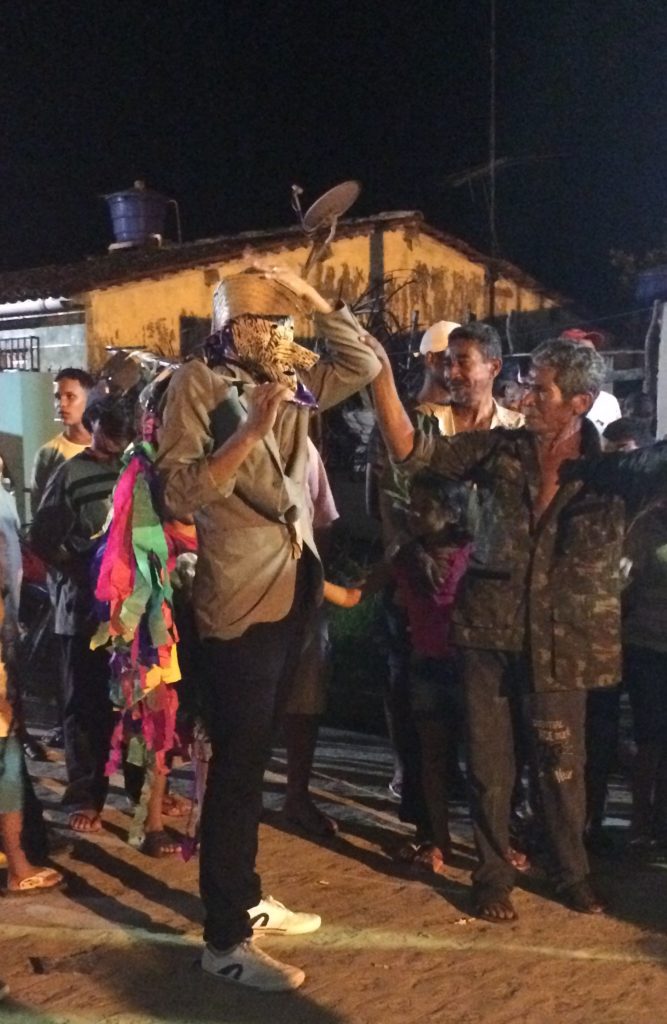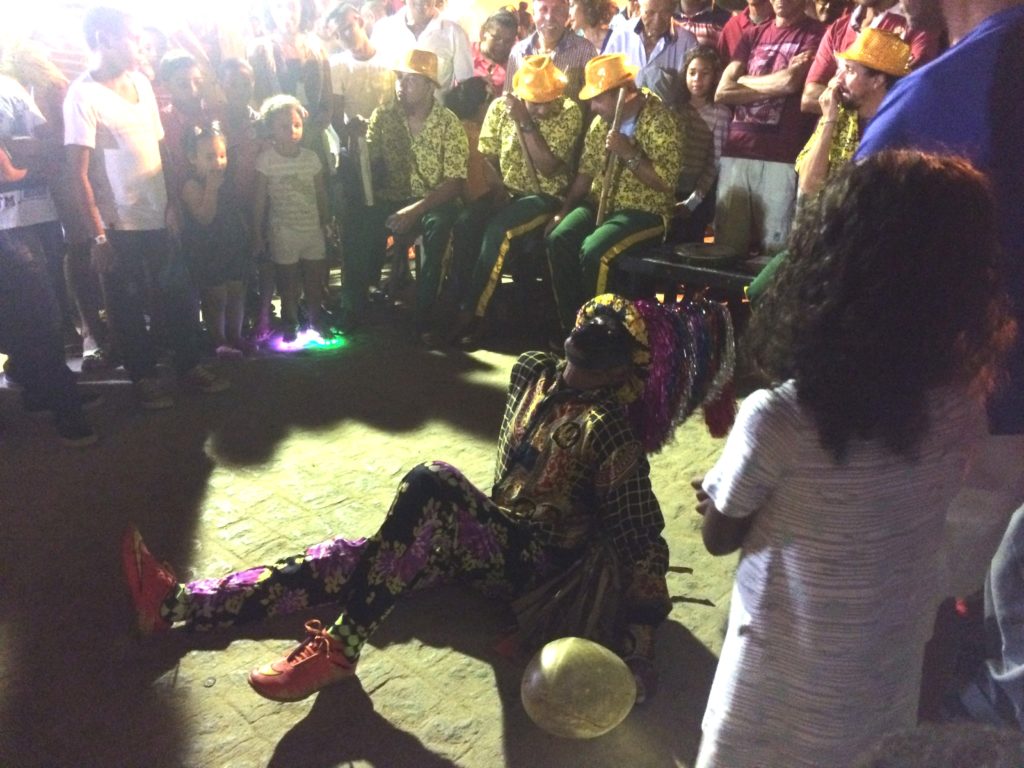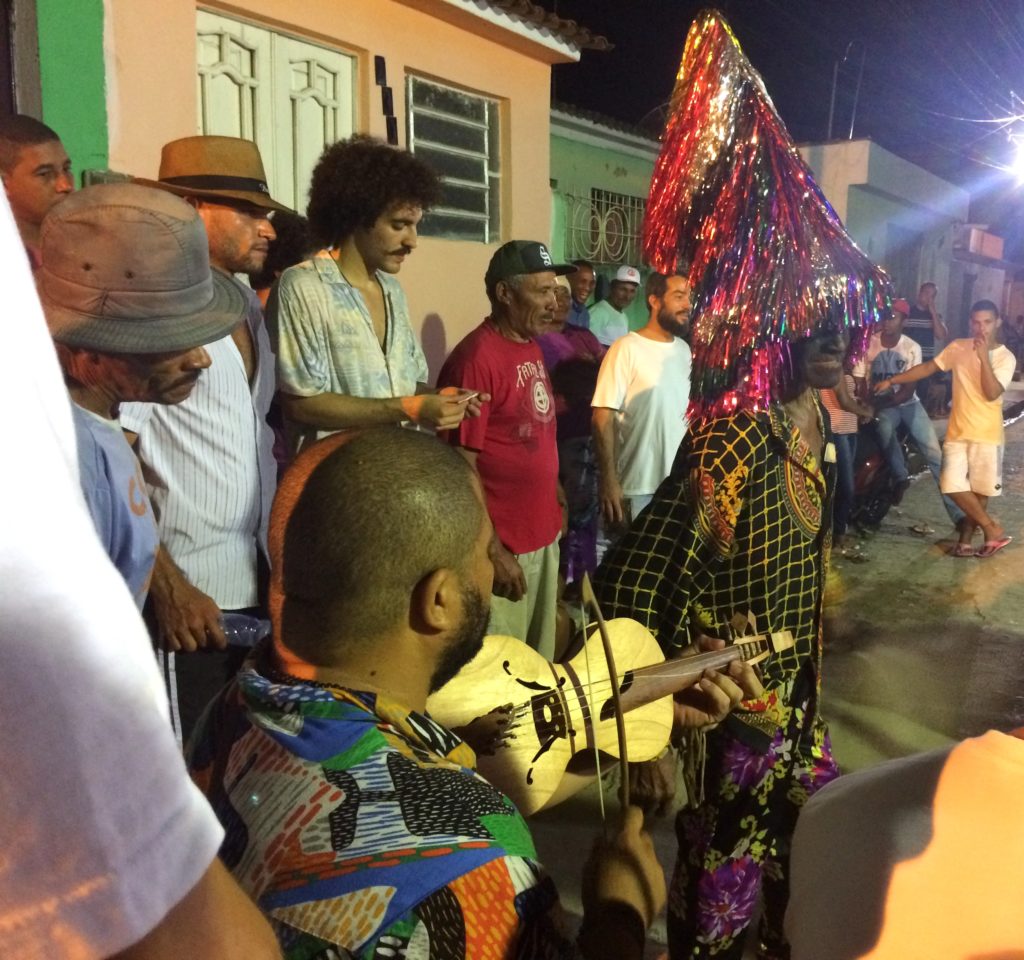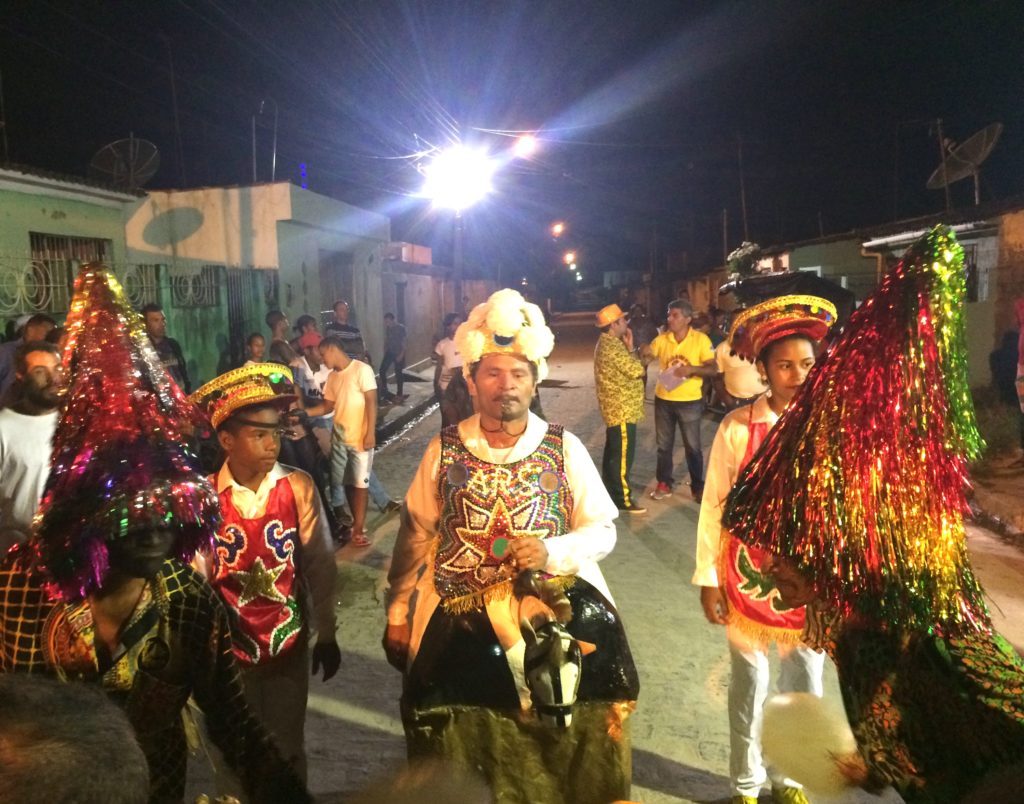Yesterday I went to Condado in the Zona da Mata to see a cavalo marinho event by Estrela de Ouro. The group was founded by Mestre Biu Alexandre, who is Fábio Soares’ grandfather. I have been taking cavalo marinho and maracatu rural classes with Fábio for the past couple months at Paço do Frevo, and he encouraged us to come out to see the event.
The event started at around 9:30pm and went all night! (I admit that I only lasted until around 1am. We had to drive 1.5 hours there and back.) I have been watching videos of cavalo marinho and learning some basic steps in class, but I was so excited to see it live and in its complete context. There is something about cavalo marinho that I am drawn to—when I first saw a video (less than a year ago) I was immediately drawn to the music, which, for me, is reminiscent of some combination of Appalachian and Irish fiddle with minor Greek tones and Brazilian rhythms (all of which have personal meaning for me). Then the dance is intriguing—it reminds me of Appalachian flatfooting mixed with urban house dance (?!). But it is not those things and there is something about the posture, a tilt of the head, or something—plus something a bit different in the music—that has made me curious to learn more. I still don’t understand it at all, but I’ve learned more.
Cavalo marinho is very colorful, full of amazing costumes, instruments, and props (for lack of a better word). The energy is intense—it is simultaneously a bit intimidating and also light-hearted. There were lots of kids there who seemed to openly express what I was feeling at every moment: fear, concern, confusion, laughter, boredom, intimidation, disgust, joy.
I am not in a position to explain the content because (1) I am unfamiliar with the characters and the stories, (2) I couldn’t hear anything, and (3) Even if I could hear, I couldn’t understand. So I picked up what I could visually and, I suppose, kinesthetically. What was clear to me was that this was not a performance by any means—it is not a “product” to be “consumed” by others. This event was for the brincadores, the people who were directly participating in the folguedo. That said, there were a few moments when the floor seemed to open up to anyone in the crowd, and people would join in for a few steps. I was interested to see that Fábio played multiple roles; I don’t know if that’s common or if he was filling in for lack of participants, but his energy and versatility were astounding.
Here are some of the characters:




Cavalo marinho has nothing to do with frevo. The only connection, it seems, is that they originate from nearby places, but the people who dance them and the contexts in which they are danced are very different. Still, I am learning a lot about the “landscape” of popular dances in Pernambuco by learning what some dances are and what they are not.
I’m fortunate to have many great teachers here to guide me through this research. Fábio is one of the best dance teachers I’ve ever had because of his attentiveness to the nuances of the movement and insistence that we continue to search for the proper “energy” (which comes from body posture; exact angles of the feet, legs, torso, arms; rhythm and connection to the music; facial expression; etc.). Along with teaching these basic steps and physical postures, he is open to sharing his thoughts about the state of cavalo marinho today and provides lots of historical and present-day context. These lessons only deepen the kinesthetic learning and help me better understand what it means to “embody” a collective memory or experience. It was wonderful to have the opportunity to see cavalo marinho live and better understand where this folguedo comes from.

